Family: Diprionidae
Family common name: coniferconifer:
a usually evergreen tree characterized by reproductive cones; e.g., pine, fir, spruce, larch, etc.
sawflies
Subfamily: Diprioninae
Genus: Zadiprion Rohwer, 1918
Subgenera: none
The Diprionidae are known as the coniferconifer:
a usually evergreen tree characterized by reproductive cones; e.g., pine, fir, spruce, larch, etc.
sawflies, though they are not the only family to use coniferconifer:
a usually evergreen tree characterized by reproductive cones; e.g., pine, fir, spruce, larch, etc.
trees as hosts (others include Siricidae, Pamphiliidae, Xyelidae, and some Tenthredinidae). Many are destructive pests as larvaelarva:
the immature stage of holometabolous insects
 , and their biology has been relatively well-studied. Diprionids have stout bodies and distinctive antennal characteristics that make adults easy to recognize (Furniss and Carolin 1977Furniss and Carolin 1977:
, and their biology has been relatively well-studied. Diprionids have stout bodies and distinctive antennal characteristics that make adults easy to recognize (Furniss and Carolin 1977Furniss and Carolin 1977:
Furniss RL and Carolin VM. 1977. Western forest insects. United States Deptartment of Agriculture Forest Service Miscellaneous Publication 1339: 1-655.).
Zadiprion is a fairly uncommon genus that occurs in the western United States and Mexico. Adults are large and stout, usually larger than Neodiprion in their overlapping range. Some species are defoliators of pine trees that can have a significant economic impact (Smith 1988Smith 1988:
Smith DR. 1988. A synopsis of the sawflies (Hymenoptera: Symphyta) of America south of the United States: introduction, Xyelidae, Pamphiliidae, Cimbicidae, Diprionidae, Xiphydriidae, Siricidae, Orussidae, Cephidae. Systematic Entomology 13: 205-261.).
There are only five described species worldwide, all restricted to the North America (Smith 1988Smith 1988:
Smith DR. 1988. A synopsis of the sawflies (Hymenoptera: Symphyta) of America south of the United States: introduction, Xyelidae, Pamphiliidae, Cimbicidae, Diprionidae, Xiphydriidae, Siricidae, Orussidae, Cephidae. Systematic Entomology 13: 205-261., Taeger et al. 2010Taeger et al. 2010:
Taeger A, Blank SM, and Liston AD. 2010. World Catalog of Symphyta (Hymenoptera). Zootaxa 2580: 1-1064.).
A key to world species of Zadiprion is included in Smith et al. 2012Smith et al. 2012:
Smith DR, Saacute;nchez-Martiacute;nez G, and Ojeda-Aguilera A. 2012. A new species of Zadiprion (Hymenoptera: Diprionidae) on Pinus durangensis from Chihuahua, Mexico, and a review of other species of the genus. Proceedings of the Entomological Society of Washington 114 (2): 224-237..
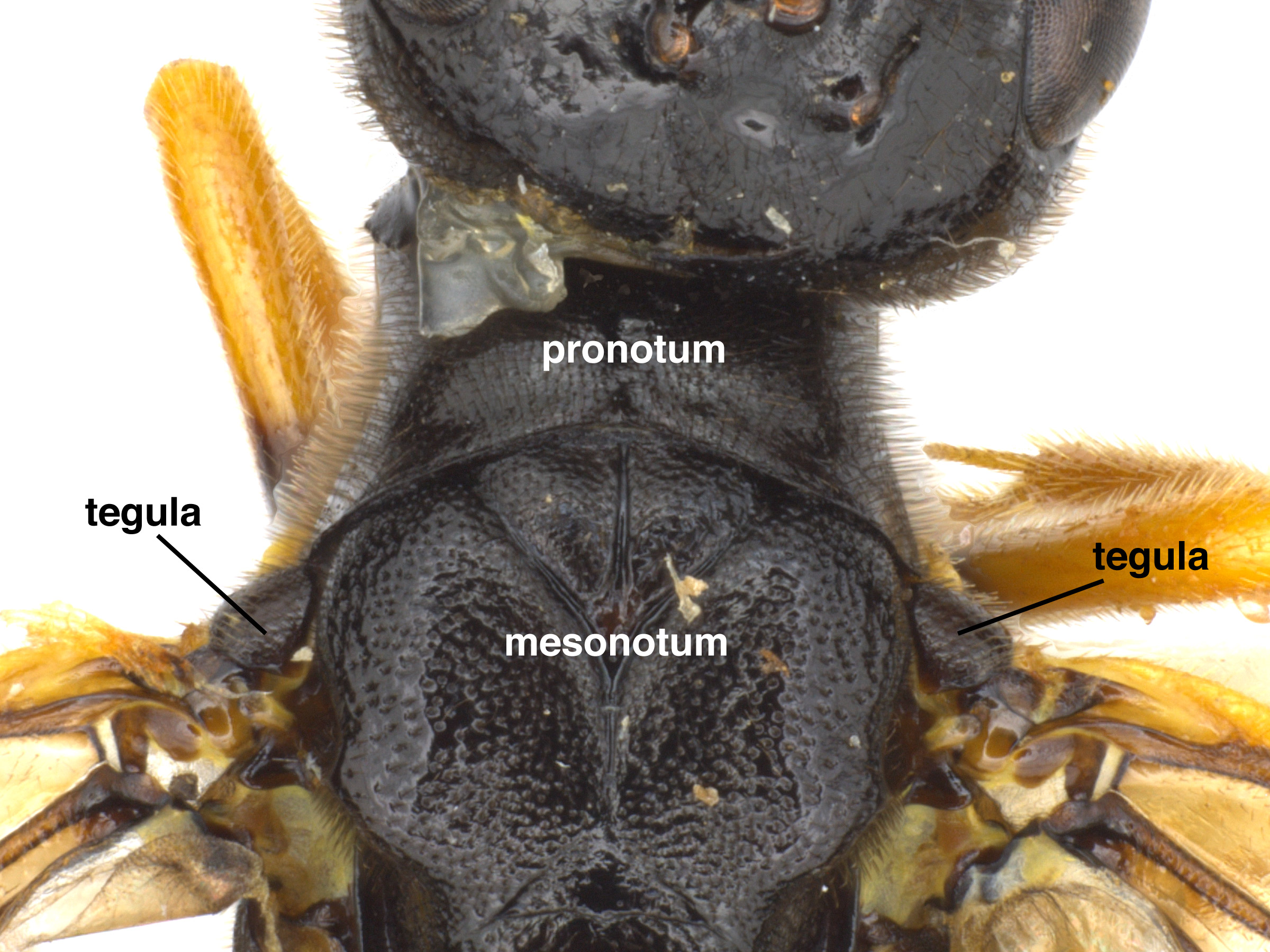 strongly constricted medially, as seen from above (Goulet 1992Goulet 1992:
strongly constricted medially, as seen from above (Goulet 1992Goulet 1992: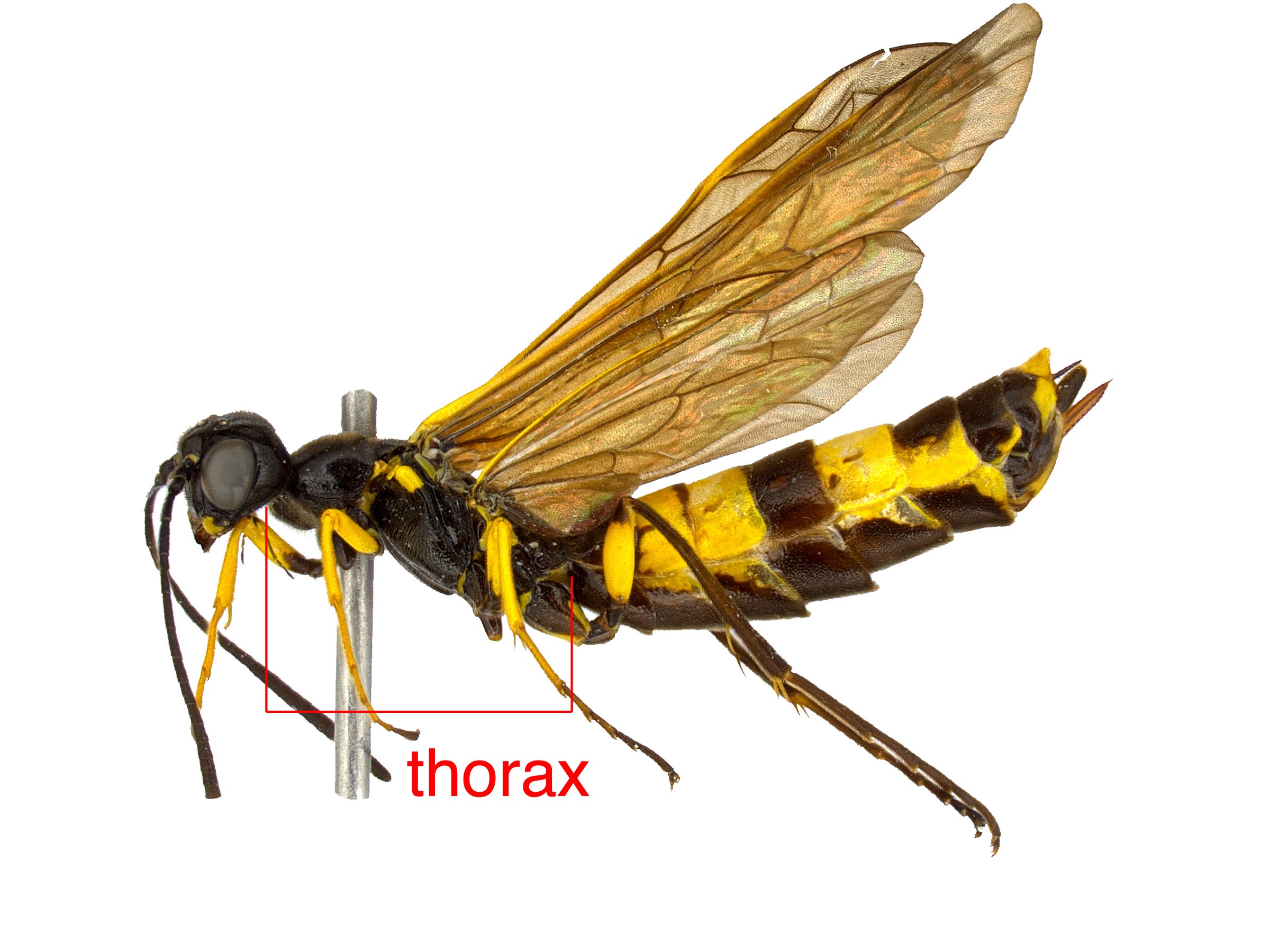 , no distinct “neck” (Goulet 1992Goulet 1992:
, no distinct “neck” (Goulet 1992Goulet 1992: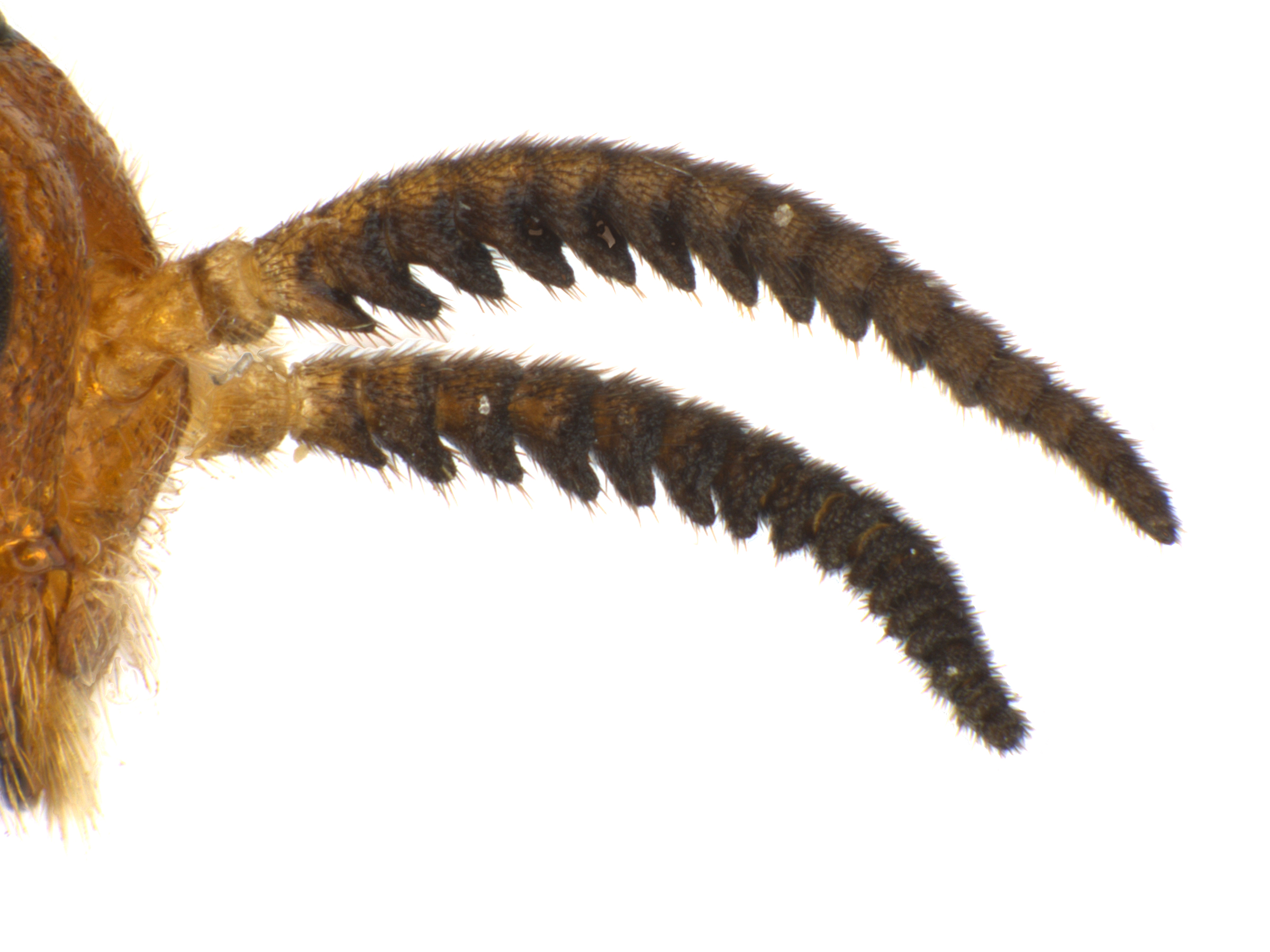 in females, pectinatepectinate:
in females, pectinatepectinate: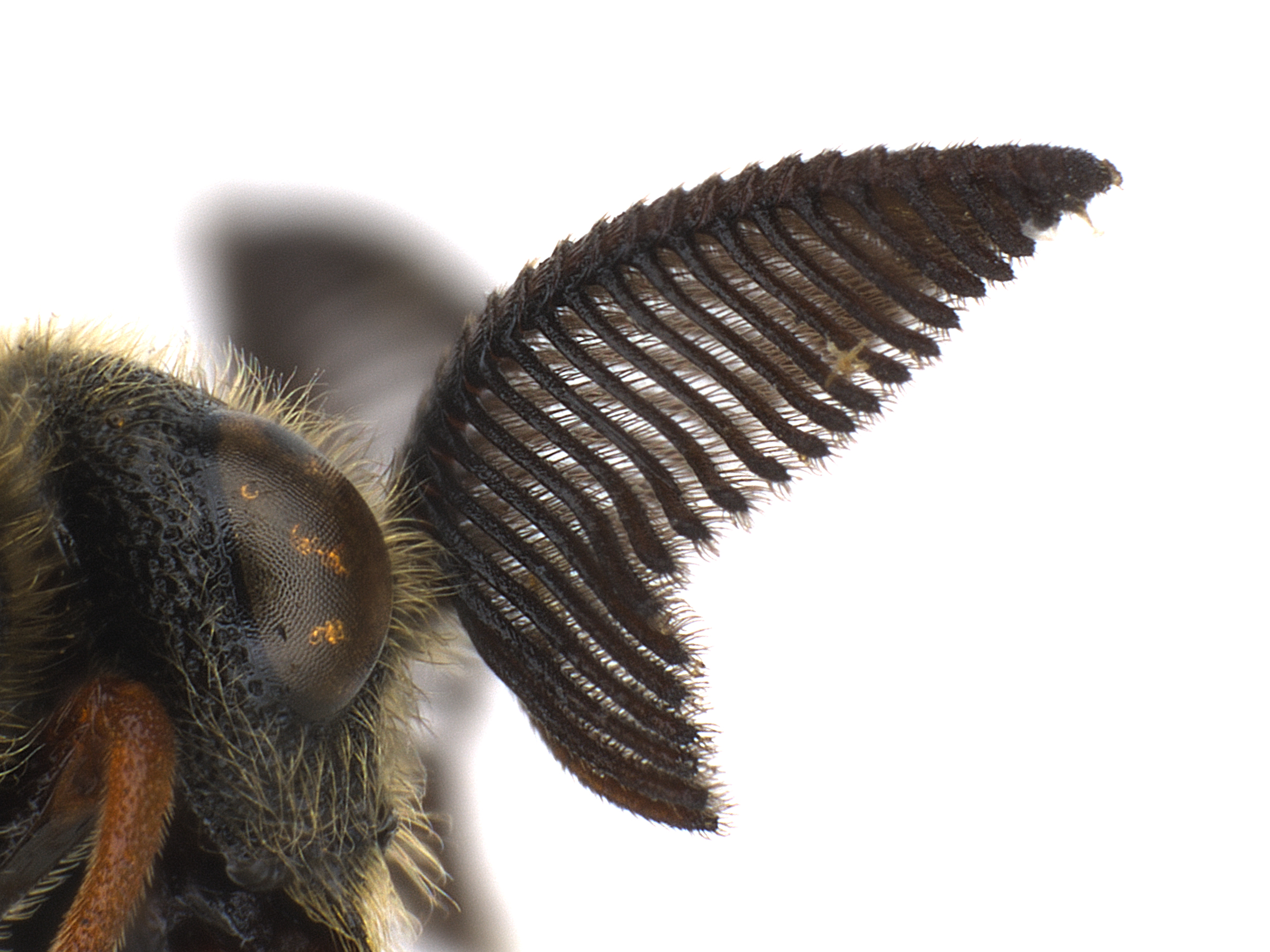 in males (Goulet 1992Goulet 1992:
in males (Goulet 1992Goulet 1992: 1A and 2A of fore wingfore wing:
1A and 2A of fore wingfore wing: connected by a crossveincrossvein:
connected by a crossveincrossvein: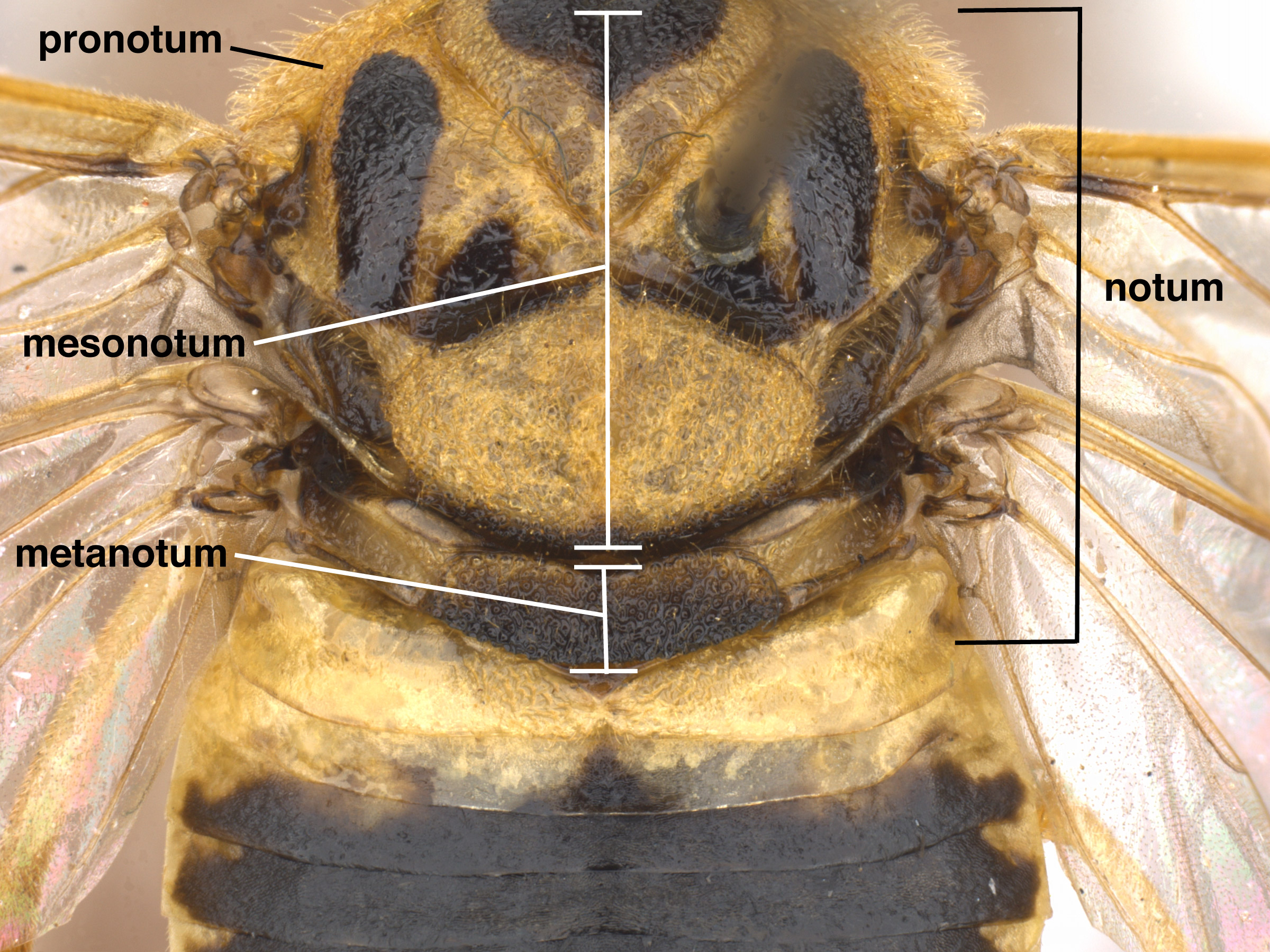 densely punctured and dull, not shining (Smith 1988Smith 1988:
densely punctured and dull, not shining (Smith 1988Smith 1988: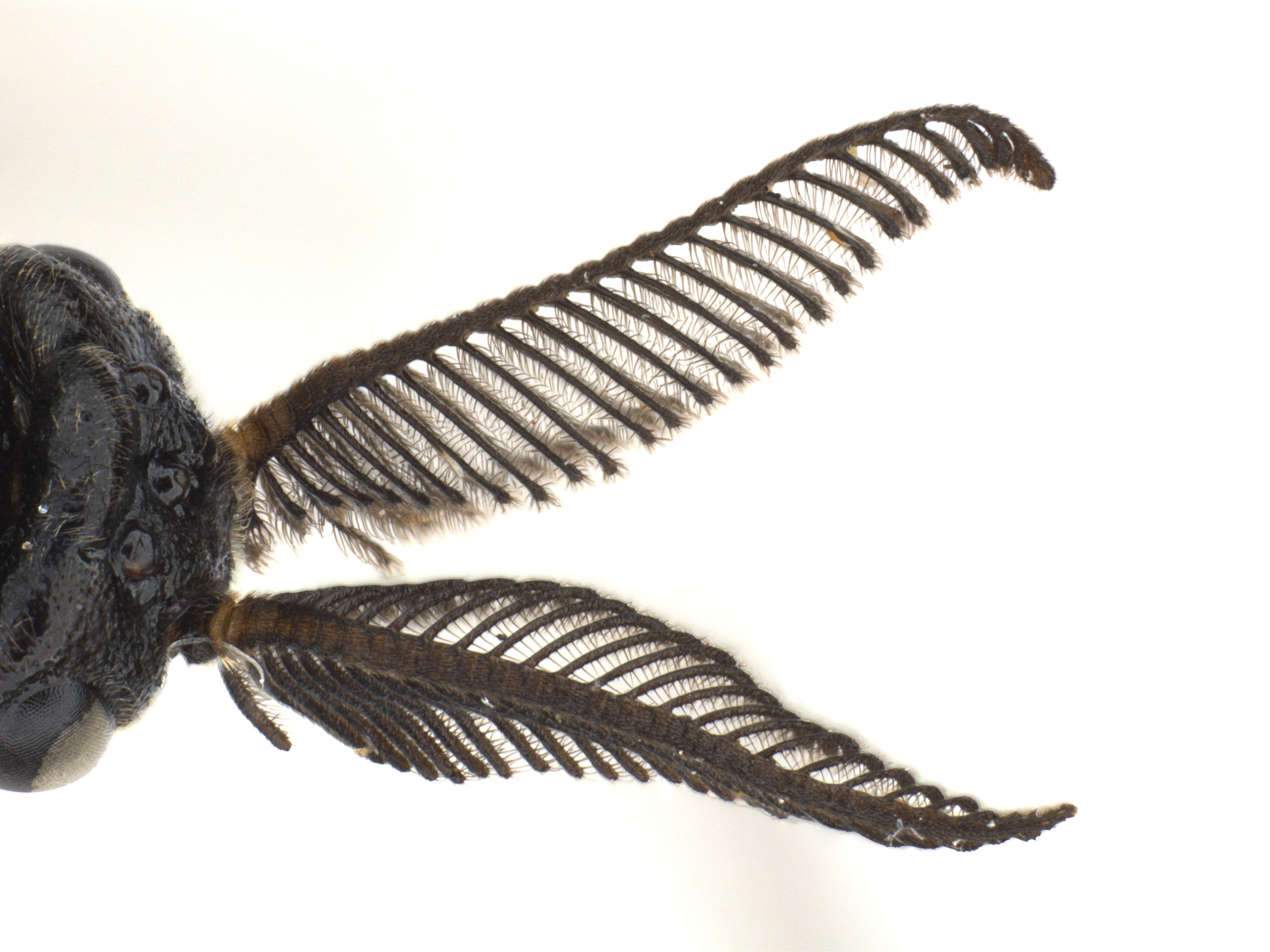 , except for the apicalapical:
, except for the apicalapical:Diprionidae are most easily recognized by the distinctive antennaeantenna:
the sensory organ emerging from the front of the head, usually between the compound eyes and above the clypeus; includes the flagellum, scape and pedicel
 of both sexes and are characterized by small, stout bodies. Zadiprion can be separated from other genera in the family by the unique partially bipectinatebipectinate:
of both sexes and are characterized by small, stout bodies. Zadiprion can be separated from other genera in the family by the unique partially bipectinatebipectinate:
describing pectinate antennae of which each segment has two projections, one on either side
 antennaeantenna:
antennaeantenna:
the sensory organ emerging from the front of the head, usually between the compound eyes and above the clypeus; includes the flagellum, scape and pedicel
 and the tarsal pulvillipulvillus:
and the tarsal pulvillipulvillus:
soft pads used for surface adhesion, located in sawflies on the first 4 segments of the tarsus
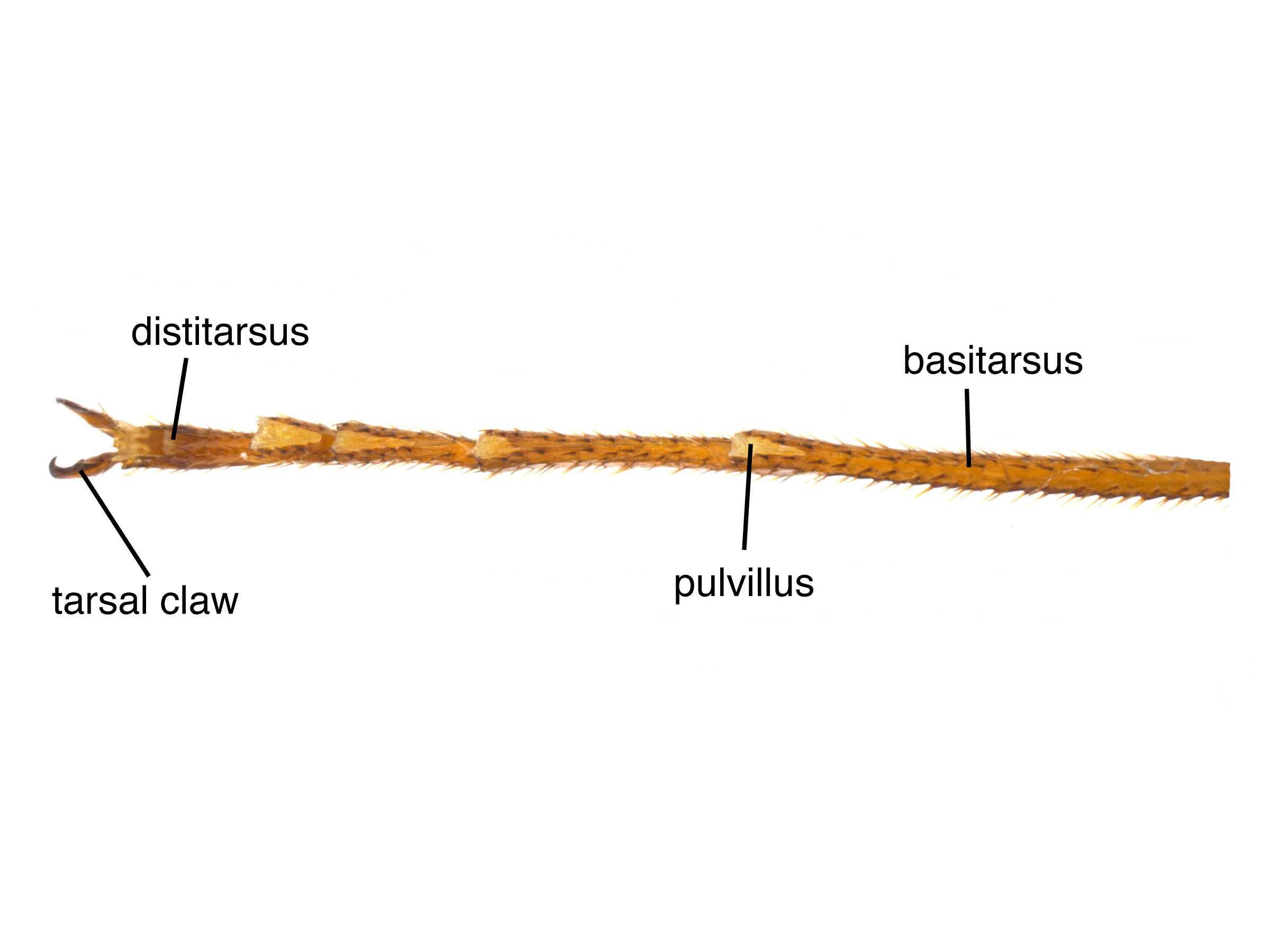 (Goulet 1992Goulet 1992:
(Goulet 1992Goulet 1992:
Goulet H. 1992. The genera and subgenera of the sawflies of Canada and Alaska: Hymenoptera. Symphyta. The insects and arachnids of Canada. Part 20. Agriculture Canada Publication., Smith et al. 2012Smith et al. 2012:
Smith DR, Saacute;nchez-Martiacute;nez G, and Ojeda-Aguilera A. 2012. A new species of Zadiprion (Hymenoptera: Diprionidae) on Pinus durangensis from Chihuahua, Mexico, and a review of other species of the genus. Proceedings of the Entomological Society of Washington 114 (2): 224-237.).
none
Larvae in North America feed on several species of pine, including Pinus ponderosa (ponderosa pine), P. monophylla (single-leaf pinyon), P. edulis (Colorado pinyon), P. pseudostrobus (smooth-bark Mexican pine), P. chiapensis (Chiapas pine), P. montezumae (Montezuma pine), P. devoniana, P. maximinoi (thin-leaf pine), P. oocarpa (egg-cone pine), P. leiophylla (Chihuahua pine), P. cembroides (Mexican pinyon), P. ayacahuite (Mexican white pine), P. pringlei (Pringle’s pine), P. durangensis (Durango pine), P. arizonica (Arizona pine), P. herrere (Herrera’s pine), and P. hartwegii (Hartweg’s pine) (Smith 1971bSmith 1971b:
Smith DR. 1971b. The genus Zadiprion Rohwer (Hymenoptera: Diprionidae). Proceedngs of the Entomological Society of Washington 73 (2): 187-197., Smith 1988Smith 1988:
Smith DR. 1988. A synopsis of the sawflies (Hymenoptera: Symphyta) of America south of the United States: introduction, Xyelidae, Pamphiliidae, Cimbicidae, Diprionidae, Xiphydriidae, Siricidae, Orussidae, Cephidae. Systematic Entomology 13: 205-261., Smith et al. 2012Smith et al. 2012:
Smith DR, Saacute;nchez-Martiacute;nez G, and Ojeda-Aguilera A. 2012. A new species of Zadiprion (Hymenoptera: Diprionidae) on Pinus durangensis from Chihuahua, Mexico, and a review of other species of the genus. Proceedings of the Entomological Society of Washington 114 (2): 224-237.).
Unlike the majority of sawflies, some species of Zadiprion do not undergo diapausediapause:
a non-active period of no development; sawflies often enter diapause as a prepupa or pupa to overwinter
in winter and instead actively feed as larvaelarva:
the immature stage of holometabolous insects
 from September to May when temperatures are above freezing. When it is colder, larvaelarva:
from September to May when temperatures are above freezing. When it is colder, larvaelarva:
the immature stage of holometabolous insects
 huddle and temporarily cease feeding. The majority of feeding occurs in the spring. Mature larvaelarva:
huddle and temporarily cease feeding. The majority of feeding occurs in the spring. Mature larvaelarva:
the immature stage of holometabolous insects
 are large, up to 40 mm in length, and are varied in coloration. At the end of the larval stage in early summer, they fall to the ground to spin cocoons and pupate. This genus is generally univoltineunivoltine:
are large, up to 40 mm in length, and are varied in coloration. At the end of the larval stage in early summer, they fall to the ground to spin cocoons and pupate. This genus is generally univoltineunivoltine:
describing an insect with a life cycle of one generation per year
(Smith et al. 2012Smith et al. 2012:
Smith DR, Saacute;nchez-Martiacute;nez G, and Ojeda-Aguilera A. 2012. A new species of Zadiprion (Hymenoptera: Diprionidae) on Pinus durangensis from Chihuahua, Mexico, and a review of other species of the genus. Proceedings of the Entomological Society of Washington 114 (2): 224-237.).
Zadiprion have been known to severely defoliatedefoliate:
to elimate a sizeable portion of the foliage of a tree, either by feeding on the leaves or otherwise causing a severe decreae in photosynthetic ability
trees. LarvaeLarva:
the immature stage of holometabolous insects
 feed on old growth needles, making them similar in habit to Neodiprion. However, fewer outbreaks are recorded for Zadiprion, and it generally has not been as damaging a pest as Neodiprion (Furniss and Carolin 1977Furniss and Carolin 1977:
feed on old growth needles, making them similar in habit to Neodiprion. However, fewer outbreaks are recorded for Zadiprion, and it generally has not been as damaging a pest as Neodiprion (Furniss and Carolin 1977Furniss and Carolin 1977:
Furniss RL and Carolin VM. 1977. Western forest insects. United States Deptartment of Agriculture Forest Service Miscellaneous Publication 1339: 1-655.).
World: Zadiprion is a North American genus (Smith 1988Smith 1988:
Smith DR. 1988. A synopsis of the sawflies (Hymenoptera: Symphyta) of America south of the United States: introduction, Xyelidae, Pamphiliidae, Cimbicidae, Diprionidae, Xiphydriidae, Siricidae, Orussidae, Cephidae. Systematic Entomology 13: 205-261., Taeger et al. 2010Taeger et al. 2010:
Taeger A, Blank SM, and Liston AD. 2010. World Catalog of Symphyta (Hymenoptera). Zootaxa 2580: 1-1064.)
North America: The range of Zadiprion extends from the western United States east to South Dakota, and through Mexico as far south as Guatemala (Smith 1988Smith 1988:
Smith DR. 1988. A synopsis of the sawflies (Hymenoptera: Symphyta) of America south of the United States: introduction, Xyelidae, Pamphiliidae, Cimbicidae, Diprionidae, Xiphydriidae, Siricidae, Orussidae, Cephidae. Systematic Entomology 13: 205-261.).
Map data from: GBIF.org (26 June 2019) GBIF Occurrence Download Zadiprion
Details about data used for maps can be found here.